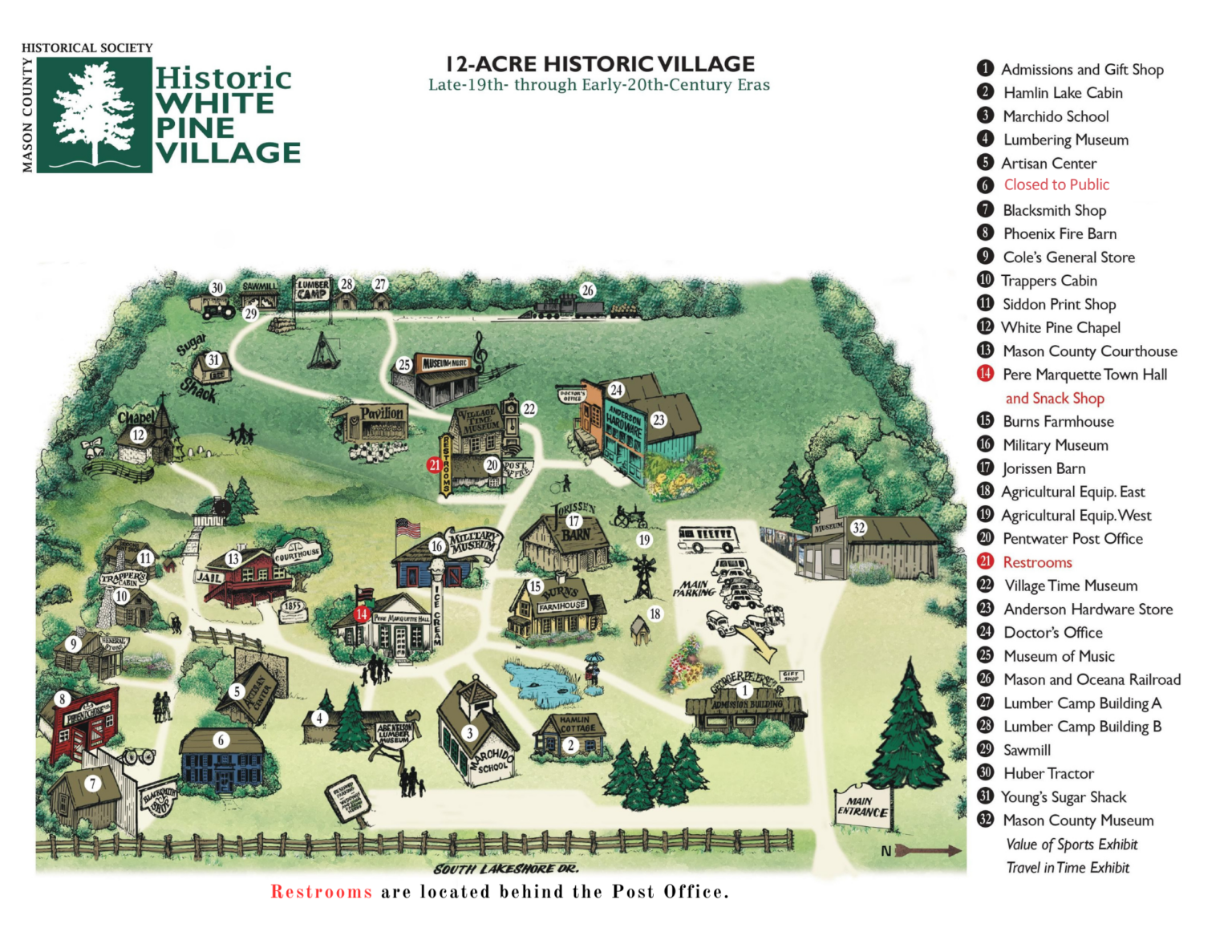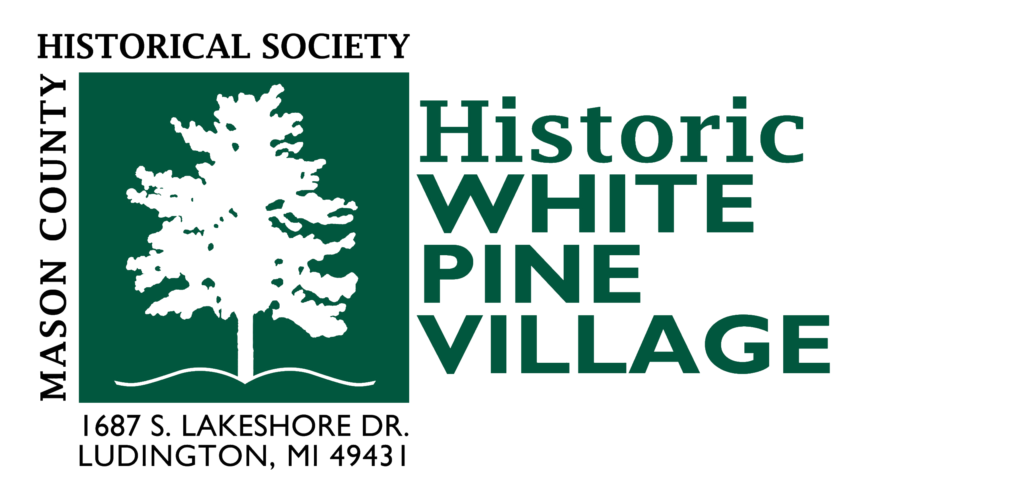
The Artisan Center features arts and crafts from the turn of the century. Weaving looms, quilting, tatting, crochet and knitting examples are all on display.
In 2014, Alfred and Donna Boulee donated a log cabin that was once part of the family resort. The cabin was in poor shape after over 100 years.
Marchido School was a Mason County rural school, built about 1895 and moved to its present location in 1973.
The George Petersen Sr. Admission Building provides an attractive and convenient entrance to Historic White Pine Village.
This original log cabin was the first authorized post office in Mason County. It was originally a combination home and post office and was built as early as 1850.
The Pere Marquette Town Hall was built in 1879. It was moved to the Village in 1973 when the new brick town hall was constructed.
This building was Mason County’s first courthouse. Built in 1849 by Burr Caswell, the territory’s first permanent pioneer, it was the first frame house in Mason County.
The lumber camp style building houses Abe Nelson’s lumbering collection. Lumbering in Mason County began with a primitive mill on the shore of Pere Marquette Lake.
Throughout our history the church has been the major edifice in any community. For all who sought to purify their religion, the simplicity of their architecture reflected the simplicity of their practice.
Cole’s General Store was the log cabin home of Mr. and Mrs. Henry Clay Cole. Mr. Cole was known as the Grand Old Man of Summit Township.
The age of lumbering was a period of natural development for a fire department. Timber served not only as a natural resource for the development of the lumber industry but also as a natural resource for the disasters of fire.
The Siddon Print Shop houses several printing presses, print cabinets, and equipment related to the print industry.
These former Lumber Camp Bunkhouses (circa 1900) are from the same Peterson Lumber Camp. The Lumber Camp buildings depict the typical lifestyle of a lumberman.
The Sugar House was located on the Wendell Young Farm on S. Scottville Road. The Young Family Sugar Bush operated for three generations.
The Mason County Horological Society organized the construction of the Village Time Museum, affectionately known as the “Clock Shop” in 1990.
The Blacksmith Shop is a reproduction of the Custer Blacksmith Shop. The equipment came mainly from the shops of the late Abe Nelson and from a shop located in Pentwater.
In 1921 Mr. and Mrs. William Anderson moved to Ludington to operate her father’s store, Krogen Hardware. They purchased the store in 1929 and renamed it the William Anderson Hardware Store.
Underwritten by the Scottville Clown Band, this beautiful, large building displays the 100-year history of the famed band from Scottville, Michigan.
Jerome Jorissen, co-founder of the village, donated the barn. The barn was torn down at his Pere Marquette Township farm. The beams were numbered for identification by their location and reconstructed at Historic White Pine Village.
The 17 X 60 Sawmill Shed houses the 1905 Port Huron Sawmill that was donated to Historic White Pine Village on April 5, 1995, by Karel Taborsky and Weldon Burchill D.D.S.
In 1880, Thomas Burns Sr. paid the tidy sum of $1,190.00 for the 80 acres of land that soon housed the Burns Farmhouse. Thomas and Mary added 5 daughters and 4 sons to fill up the rooms in their farmhouse.
The Village Doctor’s office was once located in Custer, MI and housed Dr. Duguid’s and Dr. Blanchette’s practices in the early 1900’s. The medical artifacts found in the office represent many area physicians who have practiced in Mason County.
The first settlers of Western Michigan experienced great difficulty in keeping up their postal communications with the outer world. In 1853, the settlers hired a man to go for their mail at a cost of 25 cents for each letter he carried out, and 12 ½ cents for each letter he brought back.

The the Historic White Pine Village is operated by the Mason County Historical Society, which also operates the nearby Port Of Ludington Maritime Museum.
Website Design By Nation Media Design
Copyright © 2021. All rights reserved.